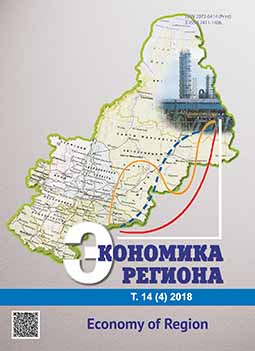Оценка резистентности малой промышленности регионов к угрозам гиперконкуренции
Assessment of Small Industry Resistance to the Hypercompetition Threats in Regions
Author(s): Elena Davidovna Vaisman, Maria Vladimirovna PodshivalovaSubject(s): Economy
Published by: Институт экономики Уральского отделения Российской академии наук
Keywords: ;small industry;small industrial enterprises;driving forces of hypercompetition;hypercompetition threats;hypercompetition;open innovations;small business;small entrepreneurs;innovation activities;surv
Summary/Abstract: Despite the relative «youth» of hypercompetition theory, a lot of research has been carried out currently. But most of them study hypercompetition threats from the perspective of transnational companies. We estimate that enterprises of all sizes, including small ones, are exposed to this threat, because hypercompetition reduces the life cycle of competitive advantage, and thus constantly changes the positions of market players. The study determines to what extent the hypercompetition drivers are manifested in the Russian economy, in which industries and regions the small industries are subject to its threats the most. We have classified small enterprises of manufacturing industries to «small industry» as prevailing in small industrial structure. The paper revealed that the Russian economy has already shown the driving forces of hypercompetition and sectoral and regional differentiation. This conclusion is based on the analysis of changes in conditions and rules of competition. Therefore, the challenge was to develop a research method to assess small industry resistance to hypercompetition threats in the regions. The method has allowed to assess 47 Russian regions according to three criteria: the degree of hypercompetition threat; potential growth and importance of small industry for the regional development; open innovations availability for small industries as an effective method for increasing hypercompetition resistance. The integrated results of these assessments made it possible to identify 11 regions: the Republic of Mordovia, Chuvash Republic, Sverdlovsk region, Tula region, Krasnoyarsk region, Chelyabinsk region, Vladimir region, Lipetsk region, Penza region, Republic of Mari El, Ryazan region. These are the areas where, on the one hand, threats of hypercompetition for primary branches of the small industry are rather big. However, on the other hand, small industry has a high development potential even in hypercompetition through open innovation.
Journal: Экономика региона
- Issue Year: 14/2018
- Issue No: 4
- Page Range: 1232-1245
- Page Count: 14
- Language: Russian

